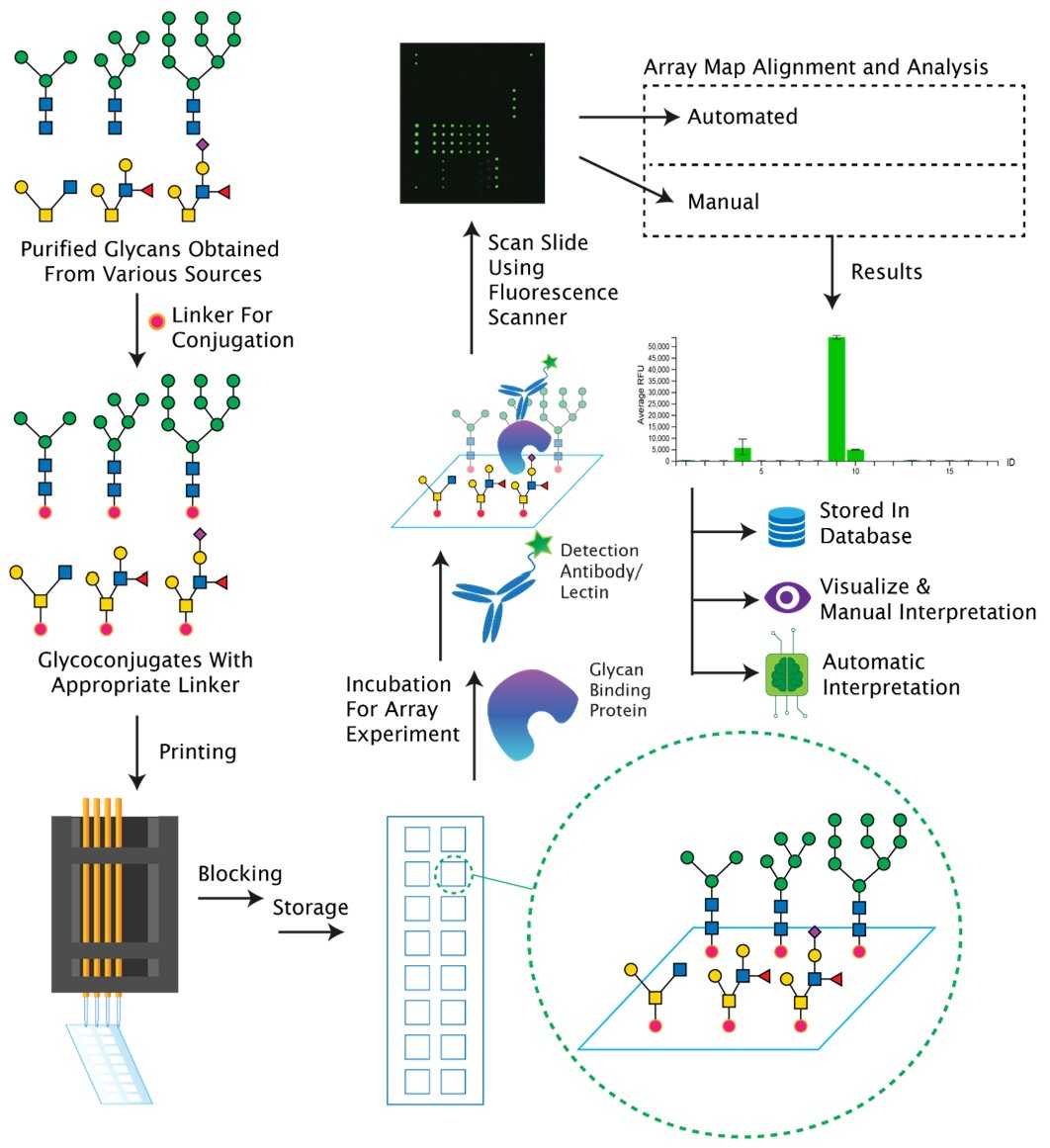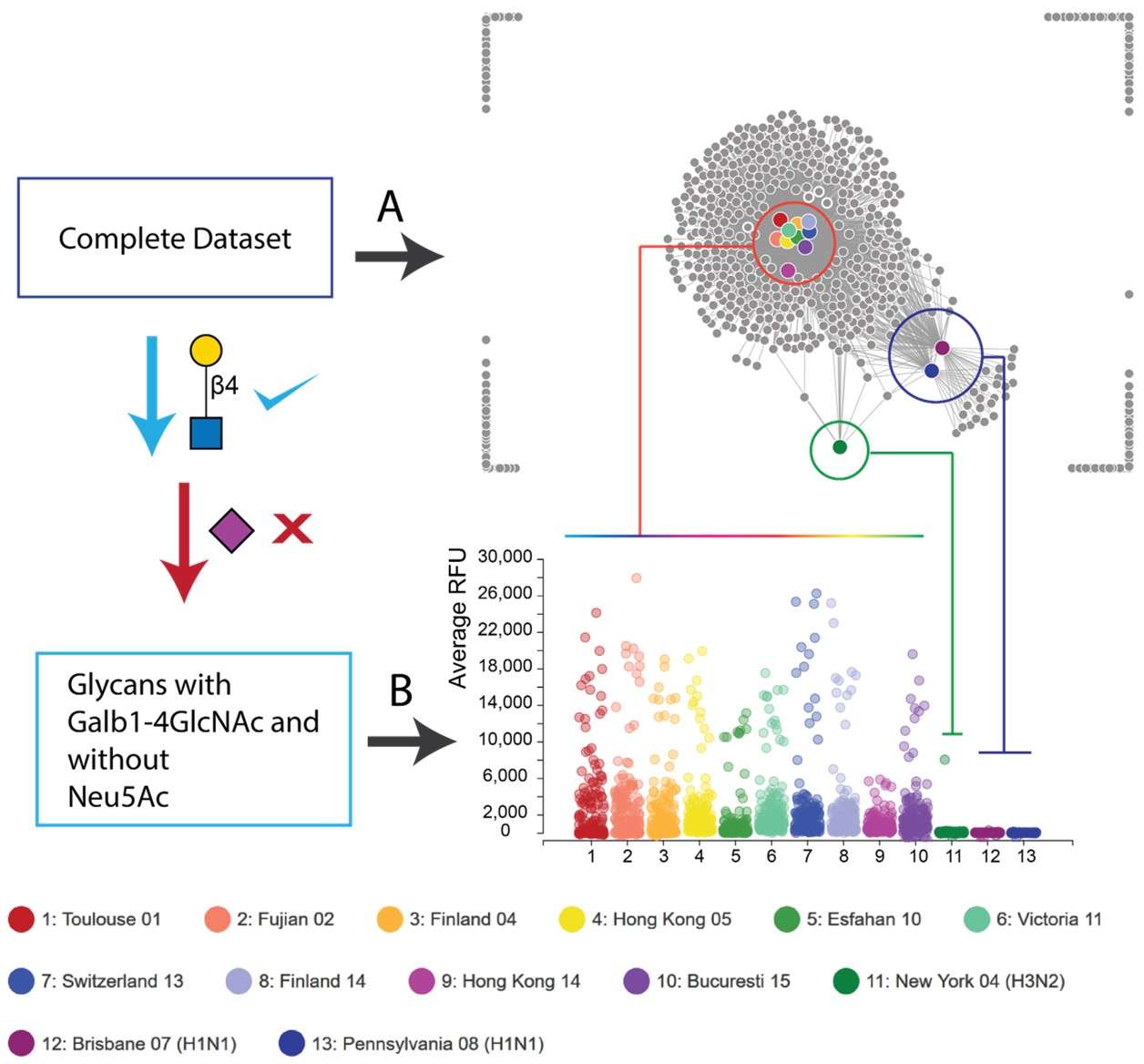100 Glycan Microarray
Studies have shown that the mechanism of many proteins depends on the interaction between proteins and carbohydrates, and this interaction shows the importance in cell recognition, cellular signal transduction and other fields. Microarrays of defined glycans represent a high throughput approach to determining the specificity of lectins, or more generally glycan-binding proteins. 100 glycan microarray is a kind of widely cover chip to screen general carbohydrate-protein interactions rapidly. Based on our rich experience and profound background knowledge, Creative Biolabs applies the 100 glycan microassay technology to match your research requirement and accelerate your project completion.
Introduction of 100 Glycan Microarray
The study of the activity and interaction of glycans is important to promote immunological research and show many advantages to understanding the interactions between cells. New technologies such as microarrays for glycan-binding applications enable researchers to reveal new information about the vast and evolving field of glycan science. Creative Biolabs’ 100 Glycan Microarray is used as a general test to help researchers determine binding characteristics of antibodies, proteins, bacteria, cell cultures, or other potential biological samples to an array of 100 glycans representing the range of glycans found glycosylated to cell membranes. Our microarray slides are specially coated to be capable of immobilizing natural glycans with close-ring structure at their free-reducing end. While we offer a series of methods to detect the binding of glycans and proteins including SPRi, Imaging Mass Spectrometry and so on.
 Fig.1 Typical glycan microarray workflow.1
Fig.1 Typical glycan microarray workflow.1
Applications of 100 Glycan Microarray
The Glycan-100 array including 100 widely studied glycan shows enormous potential to discover novel carbohydrate-protein interactions. These glycan targets are often reported in the literature which showed important binding functions. For example, it has been shown that a variety of sialic acid glycosides bind to viruses in a specific manner and are involved in inflammation and infectious diseases. Some galectins participate in apoptosis, cell adhesion and T cell activation inhibition by binding β-galactoside. The oligosaccharides of human milk combine with microorganisms to promote the growth of normal flora and inhibit pathogens in the gastrointestinal tract. This technology can be used in many specific services such as Glycoprotein Structure Analysis, Glycoprotein Quantification, High Throughput Glycan Screening Service, Tumor Glyco-diag Service, and Anti-Glycoprotein Antibody Development.
Creative Biolabs provides commercial array products and customized array services according to your research goals for glycomic analysis. Please contact us for more details.
Published data
Glycan microarrays attach different glycans to the surface of slides in non-covalent or chemically covalent binding and are a valuable tool for studying glycan-bound proteins. This paper introduces us to the process of constructing glycan microarrays and how to implement glycan microarray experiments. In addition to that, this paper highlights some of the informative tools available or under development for analyzing glycan microarray data, such as data repositories, data visualization, manual and automated analysis tools, and so on. An understanding of the glycan microarray construction process and data analysis tools will help researchers apply glycan microarrays more effectively in various studies such as glycoprotein analysis and tumor research.
 Fig.2 Demonstration of glycan array data visualization.1
Fig.2 Demonstration of glycan array data visualization.1
FAQs
Q1: What is the significance of the 100 glycan microarrays in disease research?
A1: 100 glycan microarray provides a wealth of information for disease research in an efficient and interpretable manner. The technology has been applied to discover various disease biomarkers such as cancer and autoimmune diseases.
Q2: What slide options are available when constructing a glycan microarray?
A2: There are several types of functionalized slide surfaces to choose from, such as nitrocellulose, epoxy, and others. Each type of slide surface uses a different mechanism to bind ligands to the surface. The type of glycoconjugate to be printed, detection wavelength, etc., need to be considered when choosing the right slide.
Customer Review
Comprehensive Glycan Collection
"Creative Biolabs' 100 glycan microarray had a comprehensive collection of glycans that was very well suited for our glycoprotein research. Their researchers were also excellent and provided us with some valuable insights in analyzing our data. We were very satisfied with their product and after-sales service."
Efficient Customized Microarray Service
"Creative Biolabs customized the 100 glycan microarrays according to our research needs. We were impressed with the quality of the chip, which played a crucial role in our glycoprotein interaction study. The final data obtained also advanced our research process. They were recommended for this product and microarray customization service."
Reference
-
Mehta, Akul Y., Jamie Heimburg-Molinaro, and Richard D. Cummings. "Tools for generating and analyzing glycan microarray data." Beilstein Journal of Organic Chemistry 16.1 (2020): 2260-2271. Distributed under Open Access license CC BY 4.0, without modification.
For Research Use Only.
Related Services

 Fig.1 Typical glycan microarray workflow.1
Fig.1 Typical glycan microarray workflow.1
 Fig.2 Demonstration of glycan array data visualization.1
Fig.2 Demonstration of glycan array data visualization.1



